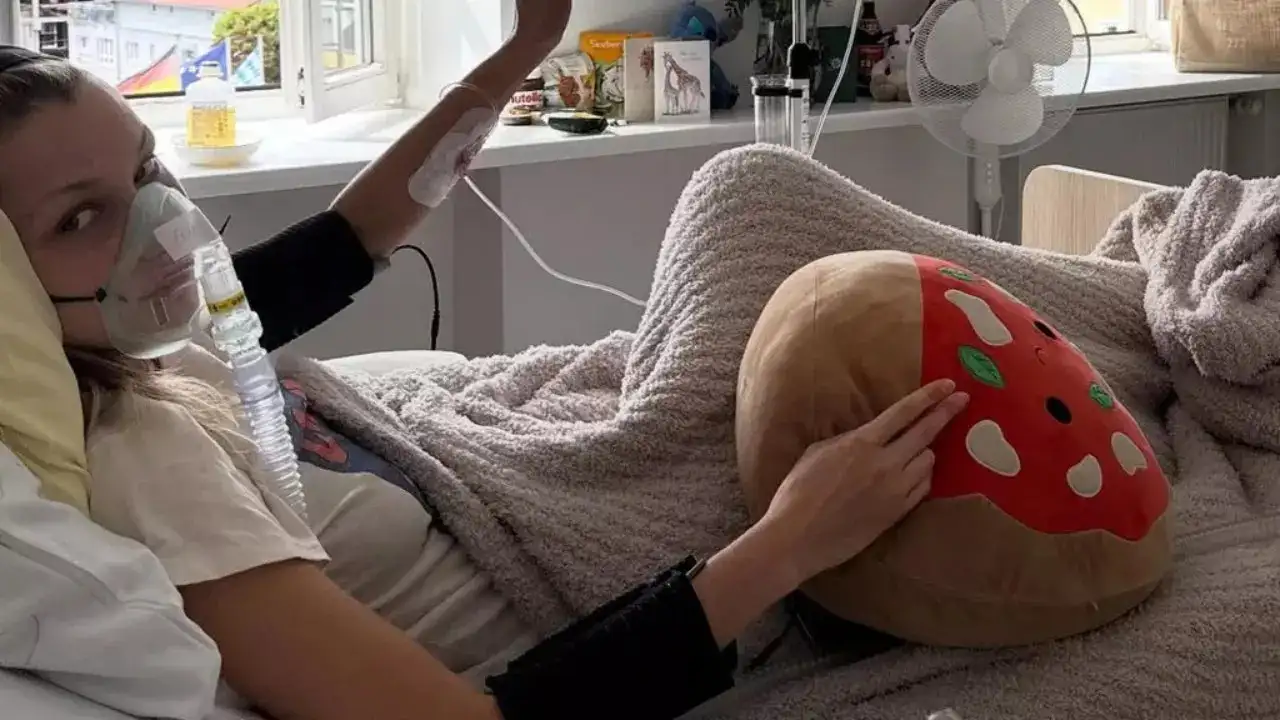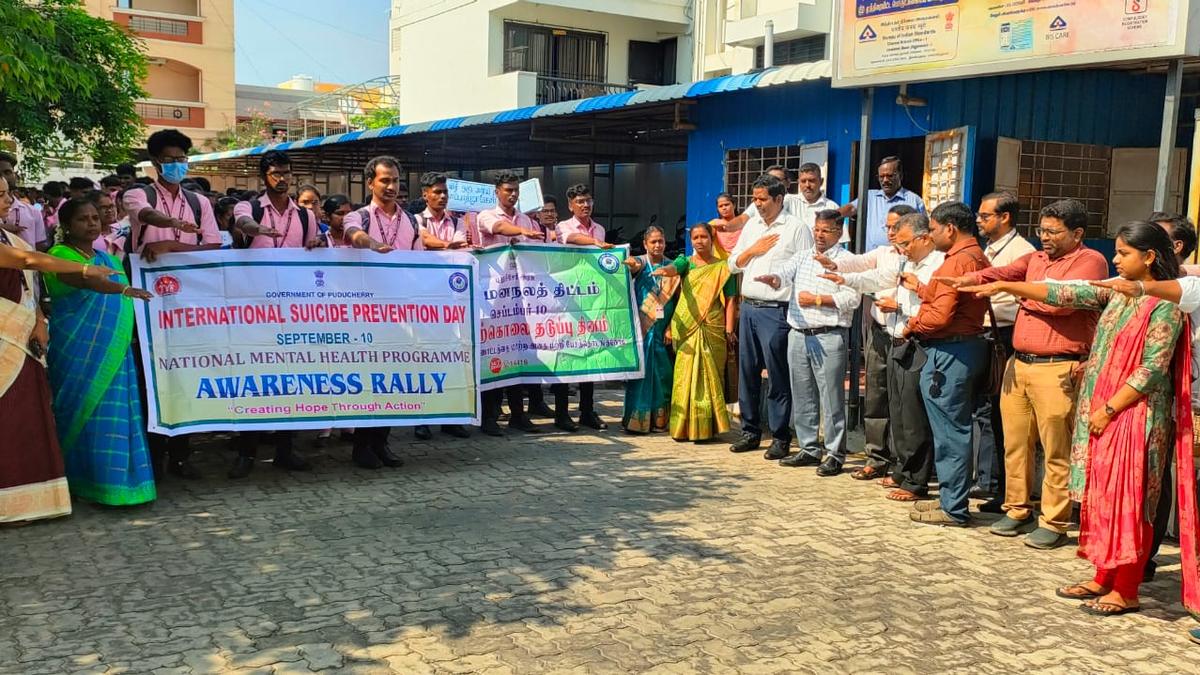By TOI LIFESTYLE DESK
Copyright indiatimes

Supermodel Bella Hadid recently sparked concern among her fans after sharing a series of intimate, vulnerable photos from what appears to be a hospital bed. The images show her hooked up to IV drips, wearing an oxygen mask, and seemingly undergoing treatment. In a heartfelt Instagram post, she apologized for being “MIA,” where her mother, Yolanda Hadid, commented, “Lyme warrior.” Her sister, Gigi Hadid, also posted messages of love and strength.Though she has not revealed all the details, Bella has long been open about facing serious health issues, including Lyme disease and other chronic conditions.Inside Bella Hadid’s health struggleBella has been open about her health issues — the symptoms, treatments, and how they sometimes force her to take long breaks. Diagnosed over a decade back with Lyme disease, an infection spread by tick bites that can evolve into a chronic condition if not managed properly, she has endured what she calls “invisible suffering” for well over a decade.In previous posts and interviews, Bella has described extreme fatigue, joint pain, brain fog, and days so difficult she can barely get out of bed. She has also shared how her mental health has been affected, due to anxiety, depression, work overload, endometriosis, PMDD (premenstrual dysphoric disorder), and PCOS (polycystic ovary syndrome) being part of her broader health story.The recent hospital bed photos are not the first time Bella has laid bare her medical journey. A couple of years back, she shared that she underwent 100+ days of treatment during a particularly severe flare-up. At that time, she posted medical records, pictures of IV treatments, and reflected on the toll the illness had taken – physically, emotionally, and neurologically.What is Lyme disease?Lyme disease is a bacterial infection transmitted to humans through the bite of an infected tick, most commonly the black-legged or deer tick. Early signs can include a characteristic “bull’s-eye” rash, fever, and fatigue. If left untreated, the infection can spread and cause more severe problems, such as neurological issues, heart complications, and arthritis. Lyme disease is treatable with antibiotics, especially when caught early.Early signs and symptomsSymptoms of being infected usually start 3 to 30 days after a tick bite. Some of the most common early signs include:A rash called erythema migrans (EM). Often, there is a slowly expanding red patch near the site of the bite. It may look like a bull’s-eye (a circle with a clear center) or just a round/oval red area. It’s warm, might grow, but usually not very painful or itchy.Fever, chills, and flu-like malaise: feeling tired, achy muscles, headaches.Swollen lymph nodes (glands), joint or muscle pains.If not treated, the infection may spread (weeks to months later), producing more symptoms: facial palsy (drooping of one side of the face), heart issues like irregular heartbeat, severe headaches, neck stiffness, numbness or tingling, joint swelling (especially knees), and sometimes neurological problems.Risk factors: Who’s at riskSome people are more likely to get Lyme disease, such as:Those who spend time outdoors in grassy, wooded, or brushy areas where deer ticks live – hiking, gardening, camping, etc. Those who live in or travel to regions where Lyme disease is common. In the US, the Northeast, upper Midwest, and some parts of the Pacific coast are known areas.Those who do not take steps to protect themselves from ticks, e.g., not using repellents, not wearing protective clothing, and not doing tick checks after being outdoors.Those who are exposed to ticks that have been attached for enough time. Usually, a tick must be attached for more than 24-36 hours for the bacteria to pass. Shorter attachments are less likely to cause infection.PreventionPreventing Lyme disease is much easier and better than letting it progress. Key prevention methods include:Avoiding tall grasses, brush, and woods when possible, especially during spring, summer, and early fall when ticks are most active.Wearing protective clothing: long sleeves, long pants, light-coloured clothing that allows ticks to be seen, shoes that cover the feet, and tucking pants into socks.Using tick repellents on skin and treating clothes / outdoor gear with substances like permethrin.After being outdoors, doing full body checks for ticks, showering, washing clothes, and checking pets. Removing a tick quickly and correctly reduces risk.Diagnosis and management: How to treatIf Lyme disease is suspected, especially with early signs, a healthcare provider will evaluate symptoms, examine the skin, look for possible tick exposure, and often perform blood tests. For treatment:At early stages, oral antibiotics like doxycycline, amoxicillin, or cefuroxime for about 10-14 days work well, sometimes longer depending on symptoms. For more serious or late-stage cases (e.g., neurological or heart involvement), intravenous (IV) antibiotics might be needed.Most people recover well if treated early. But some have lingering symptoms – fatigue, joint pain, and brain fog – for months after treatment. This is sometimes called Post-Treatment Lyme Disease Syndrome (PTLDS).Management of lingering symptoms may include physical therapy, pain management, helping with sleep, and support for mental health.Why early detection mattersCatching Lyme disease early is crucial because once the bacteria spread, more severe damage or a more prolonged recovery is more likely. Also, treatment is most effective when started early. Delays can lead to joint, heart, or nerve problems that might last longer. Early signs like rash, fever, or feeling unwell should prompt a medical check-in, especially if there’s known possible exposure to ticks.



